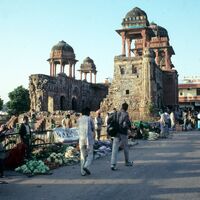 Mehrauli (neighborhood)
Mehrauli (neighborhood) 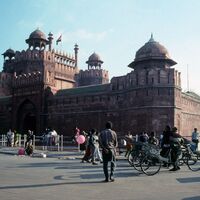 Red Fort
Red Fort delhi gate
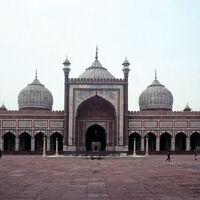 Jama Masjid
Jama Masjid Conceived as the largest mosque of the Indian subcontinent (later surpassed by Aurawgzib's Jami mosque in Lahore), the Jami mosque of Delhi was built as the congregational mosque of Shah Jahan's new city of Shahjahanabad. Located on a high ridge near Shah Jahan's palace-fort (now known as the Red Fort), the mosque is raised on a high plinth and approached by steep flights of steps on the north, east and south sides. The prayer chamber has a prominent central portal, and is surmounted by three bulbous white marble domes and framed with towering minarets. Prayer hall: 27x61 m
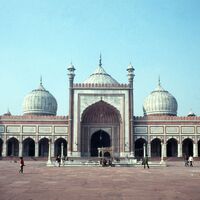 Jama Masjid
Jama Masjid Conceived as the largest mosque of the Indian subcontinent (later surpassed by Aurawgzib's Jami mosque in Lahore), the Jami mosque of Delhi was built as the congregational mosque of Shah Jahan's new city of Shahjahanabad. Located on a high ridge near Shah Jahan's palace-fort (now known as the Red Fort), the mosque is raised on a high plinth and approached by steep flights of steps on the north, east and south sides. The prayer chamber has a prominent central portal, and is surmounted by three bulbous white marble domes and framed with towering minarets. Prayer hall: 27x61 m
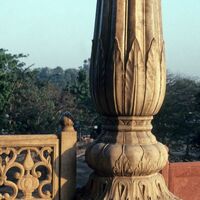 Red Fort, Sawan Pavilion
Red Fort, Sawan Pavilion The Red Fort was the residence of the Mughal emperor of India for nearly 200 years, until 1857. It is located in the centre of Delhi and houses a number of museums. In addition to accommodating the emperors and their households, it was the ceremonial and political centre of Mughal government and the setting for events critically impacting the region.
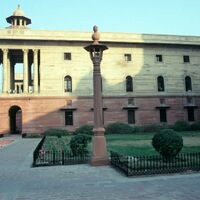 Secretariat Building
Secretariat Building The Secretariat Building was designed by the prominent British architect Herbert Baker in Indo-Saracenic Revival architecture. Both the identical building have four levels, each with about 1,000 rooms, in the inner courtyards to make space for future expansions. In continuation with the Viceroy's House, these buildings also used cream and red Dholpur sandstone from Rajasthan, with the red sandstone forming the base. Together the buildings were designed to form two squares. They have broad corridors between different wings and wide stairways to the four floors and each building is topped by a giant dome, while each wings end with colonnaded balcony. Much of the building is in classical architectural style, yet it incorporated from Mughal and Rajasthani architecture style and motifs in its architecture. These are visible in the use of Jali, perforated screens, to protect from scorching sun and monsoon rains of India. Another feature of the building is a dome-like structure known as the Chatri, a design unique to India, used in ancient times to give relief to travelers by providing shade from the hot Indian sun.
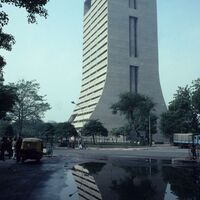 Delhi
Delhi 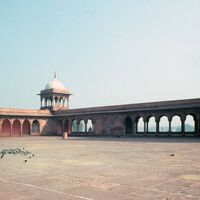 Jama Masjid
Jama Masjid Conceived as the largest mosque of the Indian subcontinent (later surpassed by Aurawgzib's Jami mosque in Lahore), the Jami mosque of Delhi was built as the congregational mosque of Shah Jahan's new city of Shahjahanabad. Located on a high ridge near Shah Jahan's palace-fort (now known as the Red Fort), the mosque is raised on a high plinth and approached by steep flights of steps on the north, east and south sides. The prayer chamber has a prominent central portal, and is surmounted by three bulbous white marble domes and framed with towering minarets. Prayer hall: 27x61 m
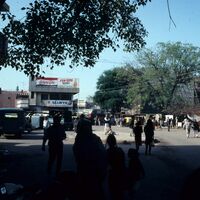 Mehrauli (neighborhood)
Mehrauli (neighborhood) 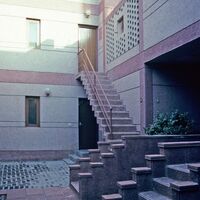 National Institute of Immunology
National Institute of Immunology 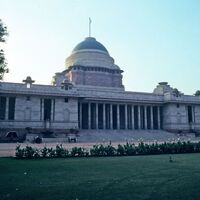 President's House
President's House 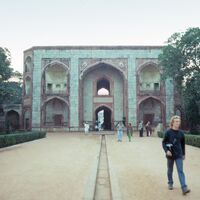 Humayun's tomb
Humayun's tomb gate from inside
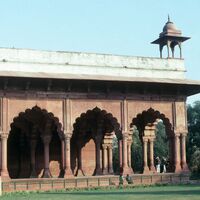 Red Fort, Diwan-i-Am
Red Fort, Diwan-i-Am The Red Fort was the residence of the Mughal emperor of India for nearly 200 years, until 1857. It is located in the centre of Delhi and houses a number of museums. In addition to accommodating the emperors and their households, it was the ceremonial and political centre of Mughal government and the setting for events critically impacting the region.
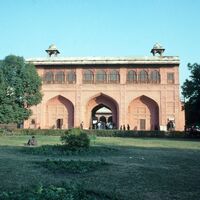 Red Fort
Red Fort rear view of gate
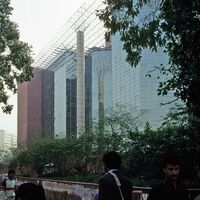 LIC Building
LIC Building 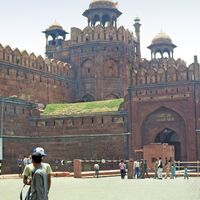 Red Fort
Red Fort entrance
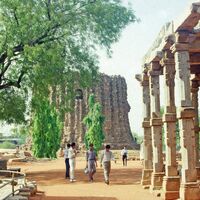 Qutb Complex
Qutb Complex Qutb minar, Alai minar
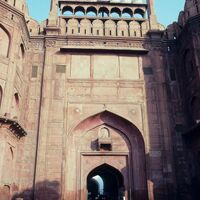 Red Fort
Red Fort gate
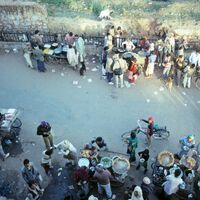 Mehrauli (neighborhood)
Mehrauli (neighborhood) 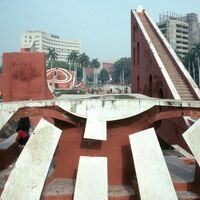 Jantar Mantar
Jantar Mantar 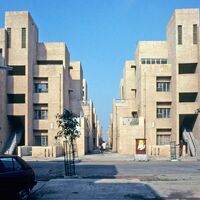 Government housing
Government housing 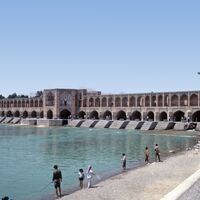 Khaju Bridge
Khaju Bridge Khwaju Bridge
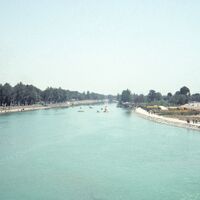 Zayandeh-Rud
Zayandeh-Rud Zayandeh Rud, view from Khwaju bridge
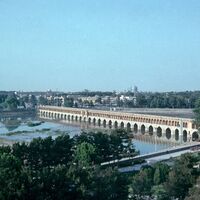 Allah Verdi Khan Bridge
Allah Verdi Khan Bridge Allah Verdi Khan bridge and Zayandeh Rud(river), view from South
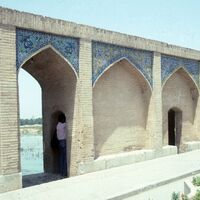 Khaju Bridge
Khaju Bridge partial view including arched walkway